.jpg)
Kaohsiung Port Cruise Terminal
With the growing urgency of climate change and increasing global awareness of environmental protection, industries worldwide are striving to reduce carbon emissions, minimize resource consumption, and promote clean energy. Green buildings—defined as structures that consume minimal resources and energy, generate the least waste, and embody ecological, energy-saving, healthy, and waste-reducing qualities—have become a central focus in realizing sustainable development.
As a leading international port operator, Taiwan International Ports Corporation (TIPC) has been proactively advancing green building initiatives. Through engineering innovation and environmentally friendly design, TIPC has successfully integrated the principles of sustainability into port infrastructure development.
Creating a Green Building Legacy
With a vision of building low-carbon and resilient ports, TIPC has been dedicated to environmental protection and smart governance, channeling substantial effort into the construction of both green and smart buildings. Since its establishment in 2012, the company has completed 32 certified green buildings, focusing on six core aspects: energy efficiency of building envelopes, air-conditioning, and lighting systems, along with CO₂ reduction, waste reduction, and water conservation.
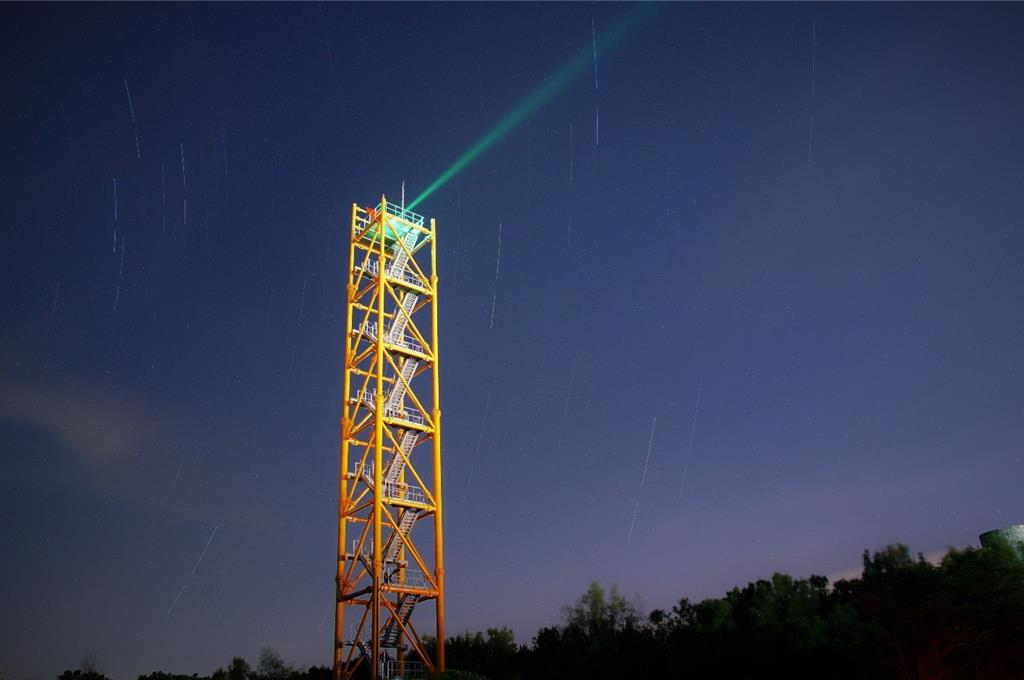
Taichung Port Navigation Beacons
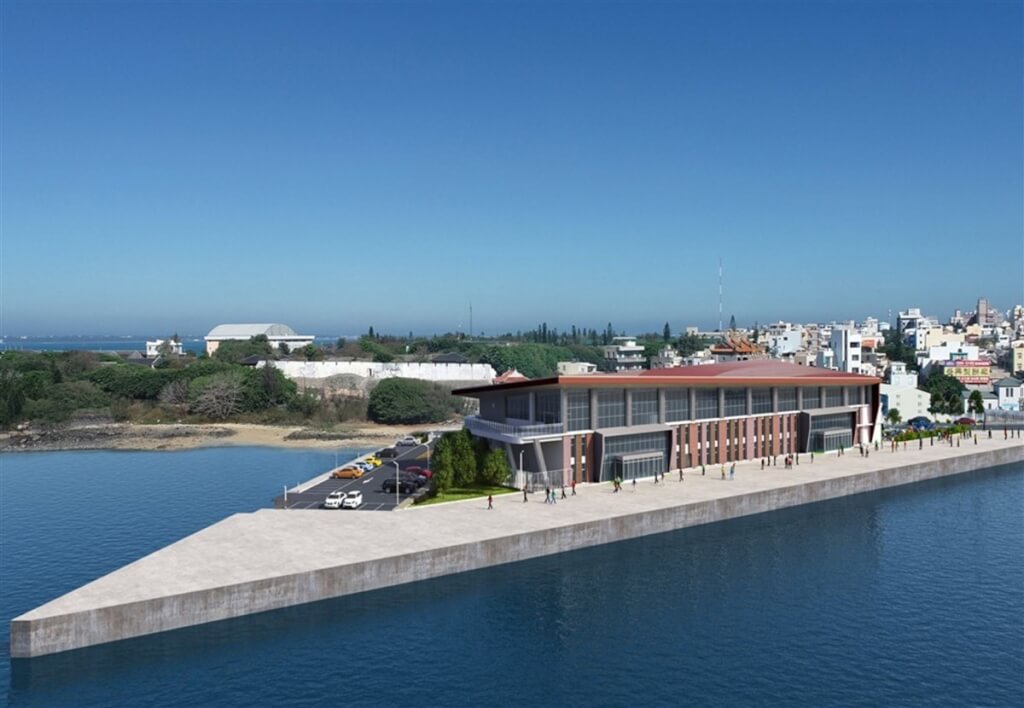
Penghu Port Magong Terminal Extension
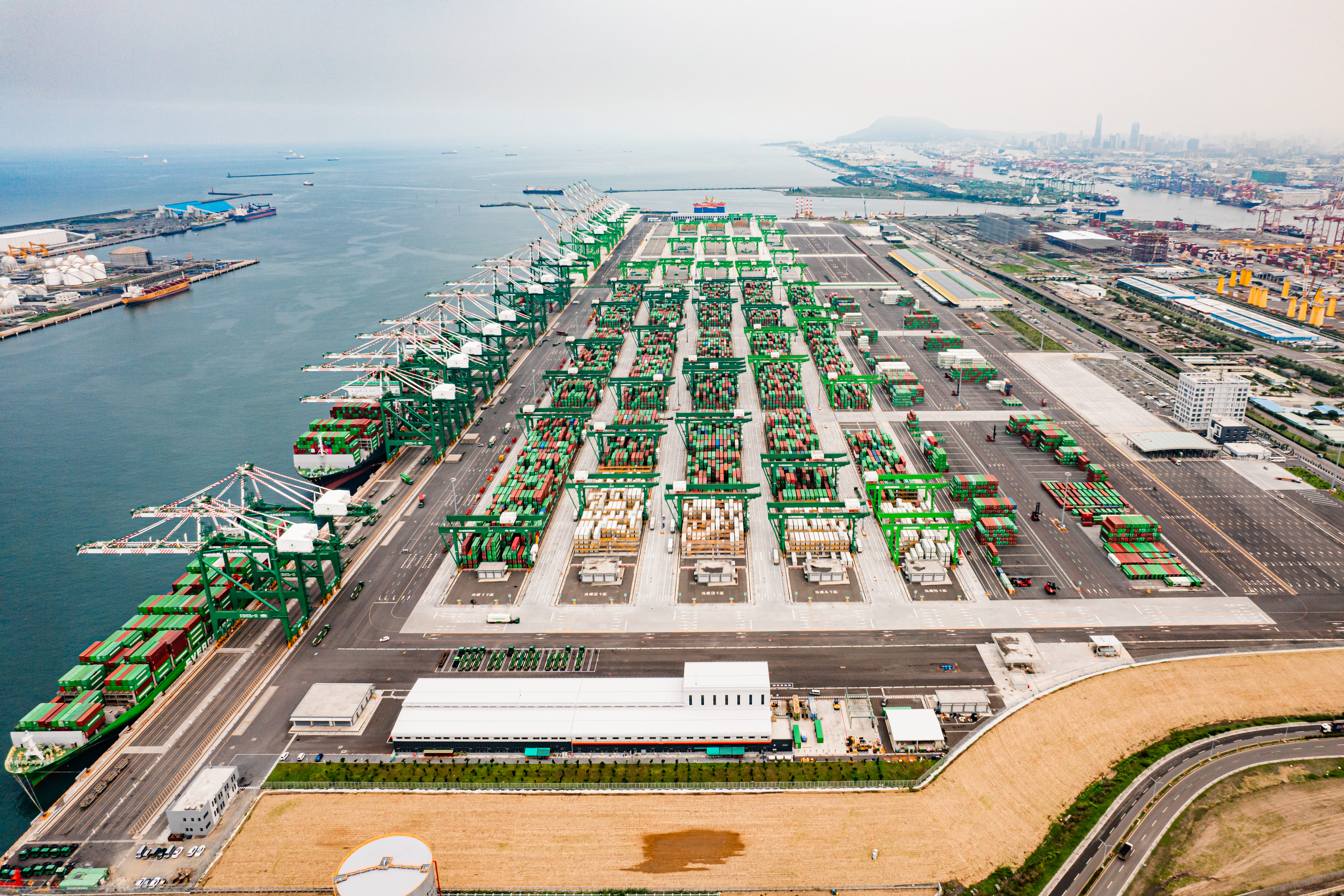
Kaohsiung Port Terminal 7
In the past three years (2022–2024), nine projects have been certified as green buildings. Key examples include:
-
Kaohsiung Port Terminal 7 Project (S1–S3 Auxiliary Facilities – Phase I): Achieved 100% energy savings through building envelope design.
-
Kaohsiung Port Passenger Service Zone Travel Center: Realized 20% energy savings in its air-conditioning system.
-
Keelung Port Warehouse No. 27: Achieved 78% lighting system energy savings and installed rooftop solar panels generating 986 kW, enabling self-sufficiency.
-
Suao Port Warehouse No. 15: Reduced CO₂ emissions by 29%.
-
Kaohsiung Port Terminal 7 Project (S1–S3 Auxiliary Facilities – Phase II): Achieved 35% waste reduction.
-
Taipei Port South Terminal Public Building Project: Integrated office, police, and fire facilities, with water savings reaching 30%.
Altogether, these projects reduce carbon emissions by 1,813,282 kg annually, equivalent to the annual CO₂ absorption capacity of 150,000 trees.
By setting an example in green building construction, TIPC is fostering an environmentally friendly and sustainable future while encouraging port partners to join in building sustainable infrastructure.
Technology-Driven Smart Architecture
The Kaohsiung Port Cruise Terminal exemplifies TIPC’s commitment to sustainable port construction, combining modern smart building systems with cultural design. The terminal boasts Taiwan’s only fully 3D curved curtain wall, passenger clearance efficiency of 2,100 people per hour, and advanced IoT integration.
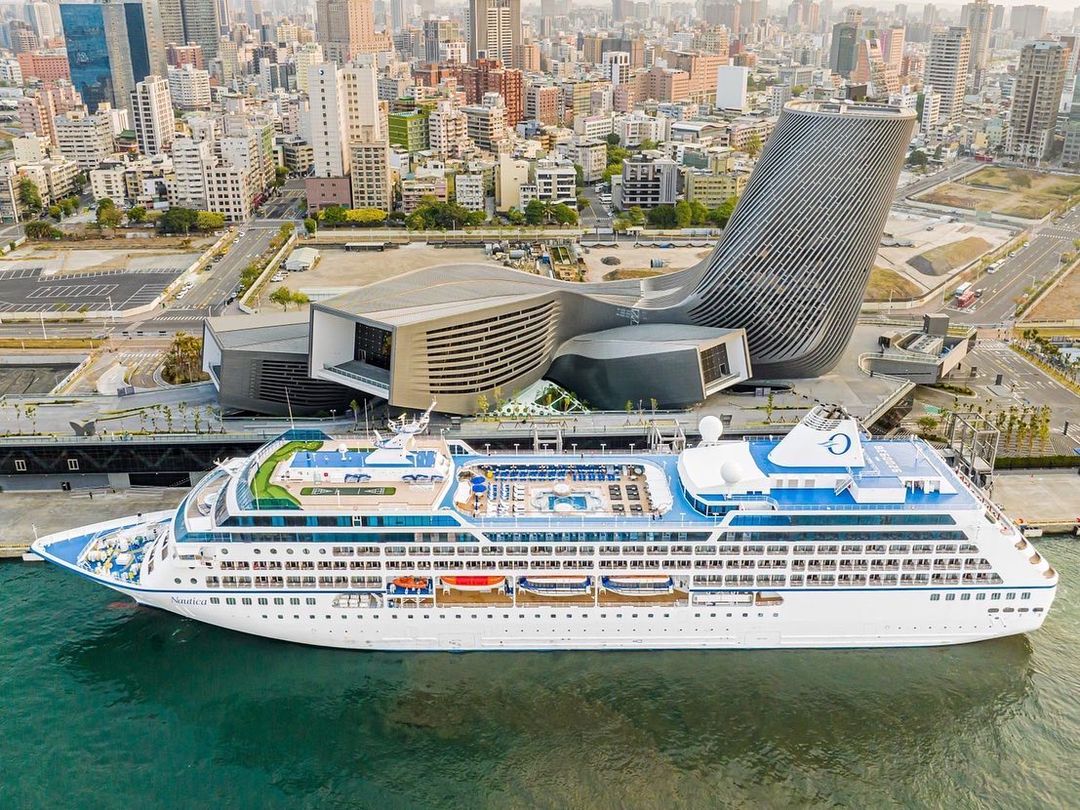
A cruise ship docked at the Kaohsiung Port Cruise Terminal
The building incorporates four major intelligent management modules:
-
Smart Building Management: Integrates access control, fire safety, surveillance, ventilation, power, and water systems, alongside multilingual interpretation services.
-
Smart Microgrid Management: Combines solar power generation, energy storage, EV charging, and smart lighting, enabling demand-side management for improved stability and reduced operational risks.
-
Property Facilities Management: Covers mechanical and electrical systems, parking, reception, meetings, inspections, and public broadcasting, with real-time alerts for rapid response.
-
Smart Environmental Control: Includes temperature, humidity, air quality, and flood detection, optimizing environmental conditions through data analytics.
With big data analysis and operational efficiency improvements, the terminal achieves 38% energy savings, 37% CO₂ reduction, 23% waste reduction, and 44% water savings, earning both Green Building Silver Certification and Intelligent Building Silver Certification.
Award-Winning Port Infrastructure
In 2023, TIPC’s major projects received multiple prestigious national recognitions, including:
-
Kaohsiung Port Terminal 7 (S1–S3)
Taiwan’s first green and smart terminal, jointly developed with Evergreen Marine, featuring remote-controlled gantry cranes, automated gate systems, and 5G-enabled IoT operations. Awarded the Ministry of Transportation and Communications (MOTC) Outstanding Public Construction Award.
-
Kaohsiung Port Cruise Terminal
Winner of the Executive Yuan’s 23rd Public Construction Golden Quality Award and the 2024 TIBA Golden Award for Smart Green Building Design.
-
Anping Port Terminal 11
Developed to support Taiwan’s offshore wind industry, completed in under two years, and recognized by MOTC for its excellent quality.
-
Taichung Port Navigation Beacons
Upgraded to international IALA standards, improving maritime safety and winning dual national awards.
-
Historic Keelung Port Commissioner’s Residence Renovation
Preserving cultural heritage while repurposing historical architecture, awarded honorable mention by MOTC.
-
Penghu Port Magong Terminal Extension
Expanded cruise berthing capacity from 50,000 to 150,000-ton vessels, supporting Taiwan’s “Blue Highway” tourism plan.
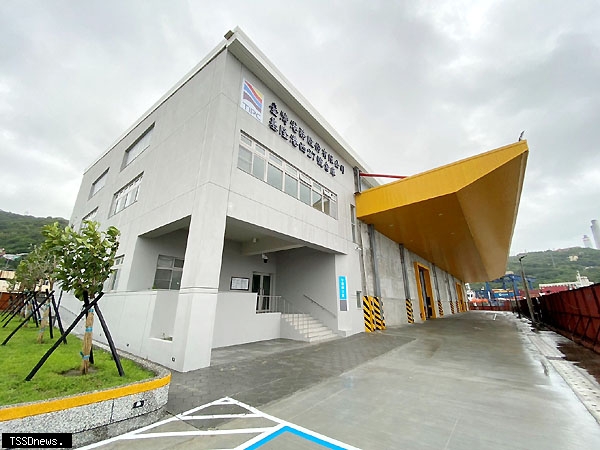
Keelung Port West Warehouse No. 27
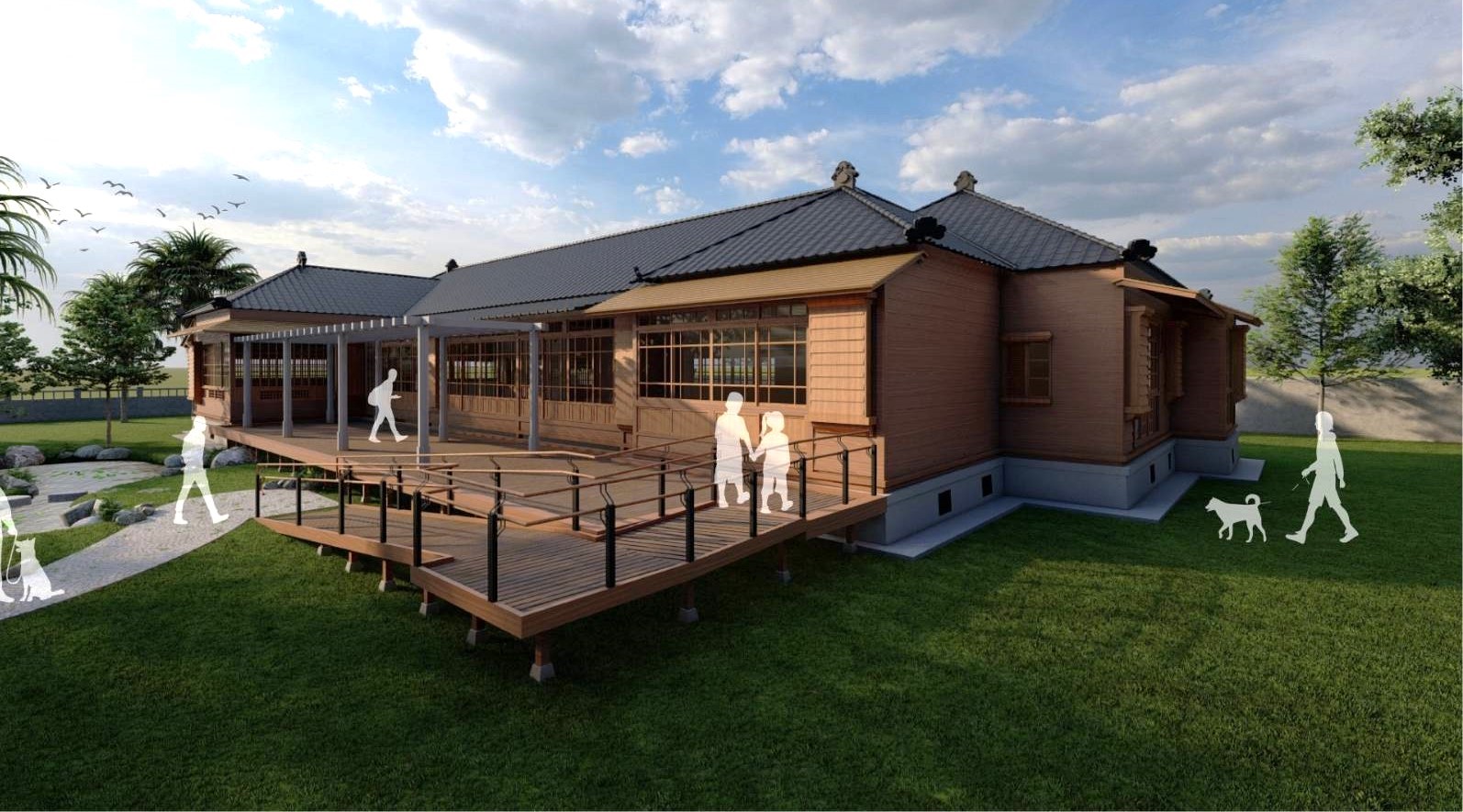
Restoration Rendering – Former Port Authority Director’s Residence, Gaoyuan New Village
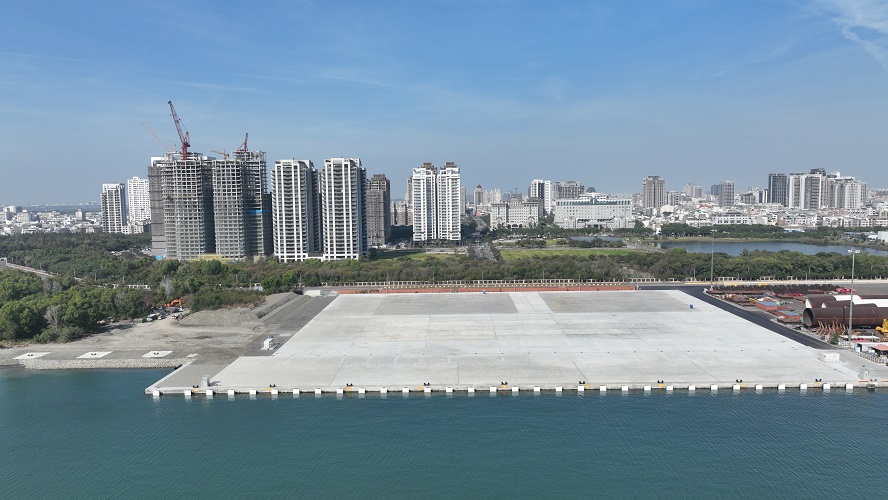
Anping Port Terminal 11 & Rear Yard Construction Project
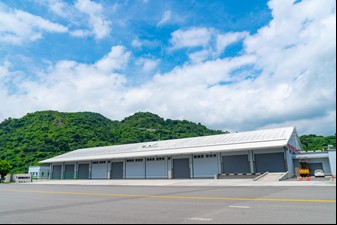
Suao Port Warehouse No. 15
Advancing Toward Sustainable Development
Through its investments in green and smart buildings, TIPC has strengthened the safety, efficiency, and sustainability of port facilities, demonstrating both innovation and foresight. Looking ahead, TIPC will continue pursuing its vision of green and smart ports, expanding intelligent management of existing infrastructure and embedding sustainability principles in all new projects. By reducing carbon emissions, enhancing operational performance, and fostering shared prosperity among port partners, TIPC is steadily progressing toward a sustainable future.